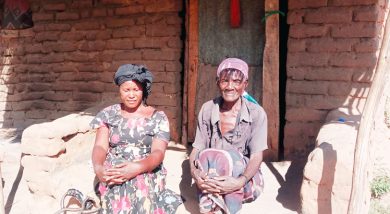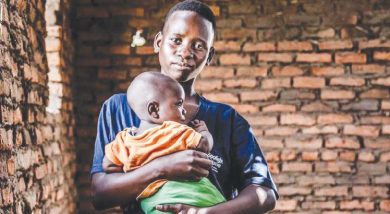Hope for Cyclone survivors
At 84, Veronica Sintchaya retired from teaching in 1996, three years after her husband’s death.
Sintchaya belongs to Nthambi Small-scale Farmers’ Club in Chimpesa Village, Traditional Authority Onga in Chiradzulu District.
The octogenarian has the gait and fitness of a 50-year-old.

Her secret?
“A balanced diet comprising the six food groups,” she says. “Every morning, I take nutritious porridge.”
In 2023, Sintchaya could not have her favourite breakfast as Cyclone Freddy destroyed her crops.
“It was the worst disaster I’ve ever witnessed. My crops were washed away just weeks before harvesting,” she explains.
The mudslides and floods left hundreds of thousands in southern Malawi without food.
Disaster struck again this year as crops wilted due to drought caused by the El Nino weather pattern across the Southern Region.
However, Sintchaya’s club has harvested enough maize to take them to the next harvest.
The farmer has harvested 20 bags weighing one tonne, including yellow maize.
She has since restored her favourite breakfast on the daily menu.
This shows the benefits of the one-year Crisis Response Initiative (CRI) by the Government of Malawi with funds from the International Fund for Agriculture Development (Ifad), the United Nations agency for community development.
The project supported 73 850 rural farmers worst affected by Cyclone Freddy in Blantyre, Balaka, and Chiradzulu where Ifad supports the Sustainable Agriculture Production Programme. Half of them were women and a quarter are the youth.
The $5.06 million (about K8.68 billion) project supported rural farmers to get fertiliser through the Affordable Inputs Programme (AIP).
The Ministry of Agriculture identified and formed farmers’ clubs in the affected communities to get fertiliser, seed, goats, chickens and rabbits depending on members’ needs.
Nthambi members received six bags of fertiliser and 100 kilogrammes of maize seed, including thikinya (a yellow variety).
Since the fertiliser was inadequate for all 20 members, Thumbwe agricultural extension development officer Martha Sitolo worked with the club to produce more organic fertiliser called Mbeya from the five bags.
“We produced 15 bags of NPK and 15 bags of Urea From the three bags of each. Each member got 35kg of each type,” says Chimwemwe Bakali, 23.
The Form Three student is the youngest club member. He has harvested 20 bags of maize from her 0.5ha field using Mbeya fertiliser.
“I’m very excited with my harvest,” says Bakali, who has looked after his siblings since their parents migrated to Blantyre wherecCyclone, the child-headed household used to get 15 bags.
The tropical storm reduced the harvest to five bags”
Nthambi Club chairperson Rhoda Kazembe hails Mbeya fertiliser and other new technologies Sitolo promotes.
Club members in Chikamgwere Village on the other side of Sitolo’s extension planning area, club, Mlambe, have a reason to smile as they await a bumper harvest of groundnuts.
Each member was given 30 kilogrammes of groundnut seed, which is enough to produce at least nine bags of shelled groundnuts.
Thumbwe Club member Maria Yakobe expects to get about 10 bags from her 0.3ha groundnut field.
“The harvest will give me enough money to buy bags of fertiliser for making Mbeya so I can boost my maize harvest next year,” Yakobe outlines her plans.
Some clubs in Thumbwe received goats while others got chickens in a pass-on programme.
Sitolo is happy that the clubs are benefiting and the gains are visible.
“We also train the club members to form savings and loan groups. By the next growing season, they would have saved enough money to buy more fertiliser and other farm inputs,” she says.
Freddy destroyed crops on more than 14 000 ha of the Chiradzulu’s 50000ha cropland, according to the district’s director of agriculture services Dennis Zingeni.
The loss and damage also included thousands of livestock; property and lives.
Chiradzulu District Council identified over 3 000 worst-hit households in Thundwe, Mombezi and Mbulumbuzi.
“They have all registered success in their crops and livestock interventions,” says Zingeni. “We expect to yield 4 000 metric tonnes (MT) of maize from households participating in CRI. That is on top of the estimated 30 000MT from the district as a whole.”
Sitchaya is happy to contribute a tonne to the district’s grain stock and food security.
“With plenty of thikinya [yellow maize] in store, I take my breakfast porridge every day and my sight is improving,” says the oldest member of Nthambi Club, shaking off the devastating effects of Freddy





